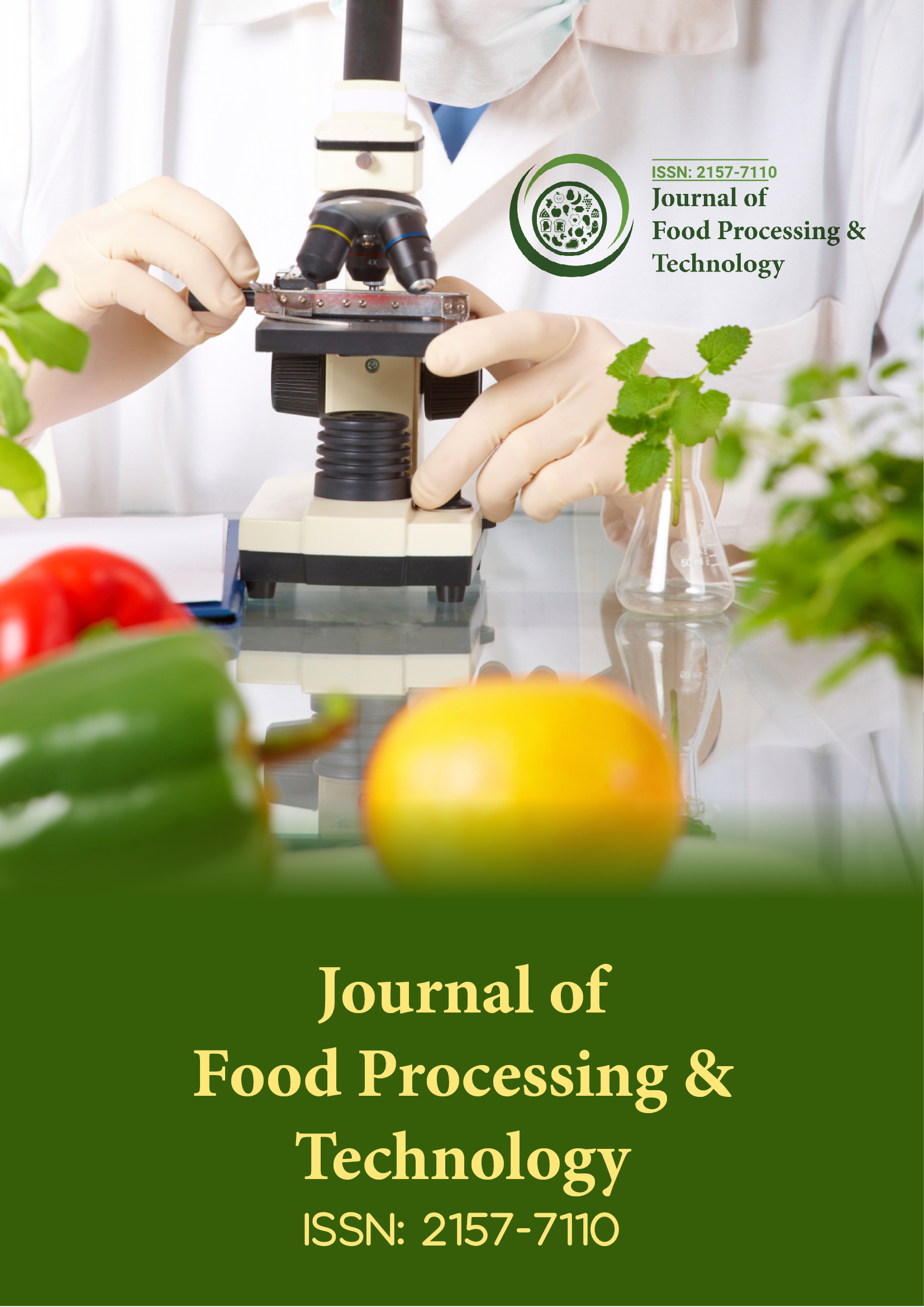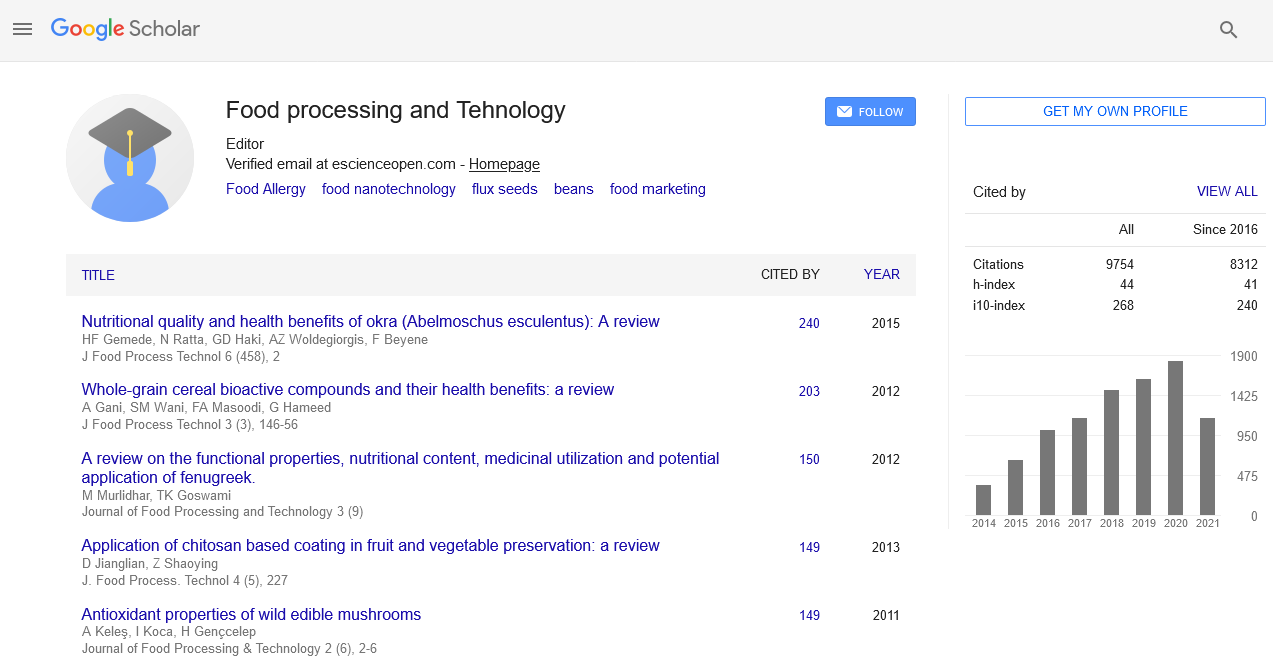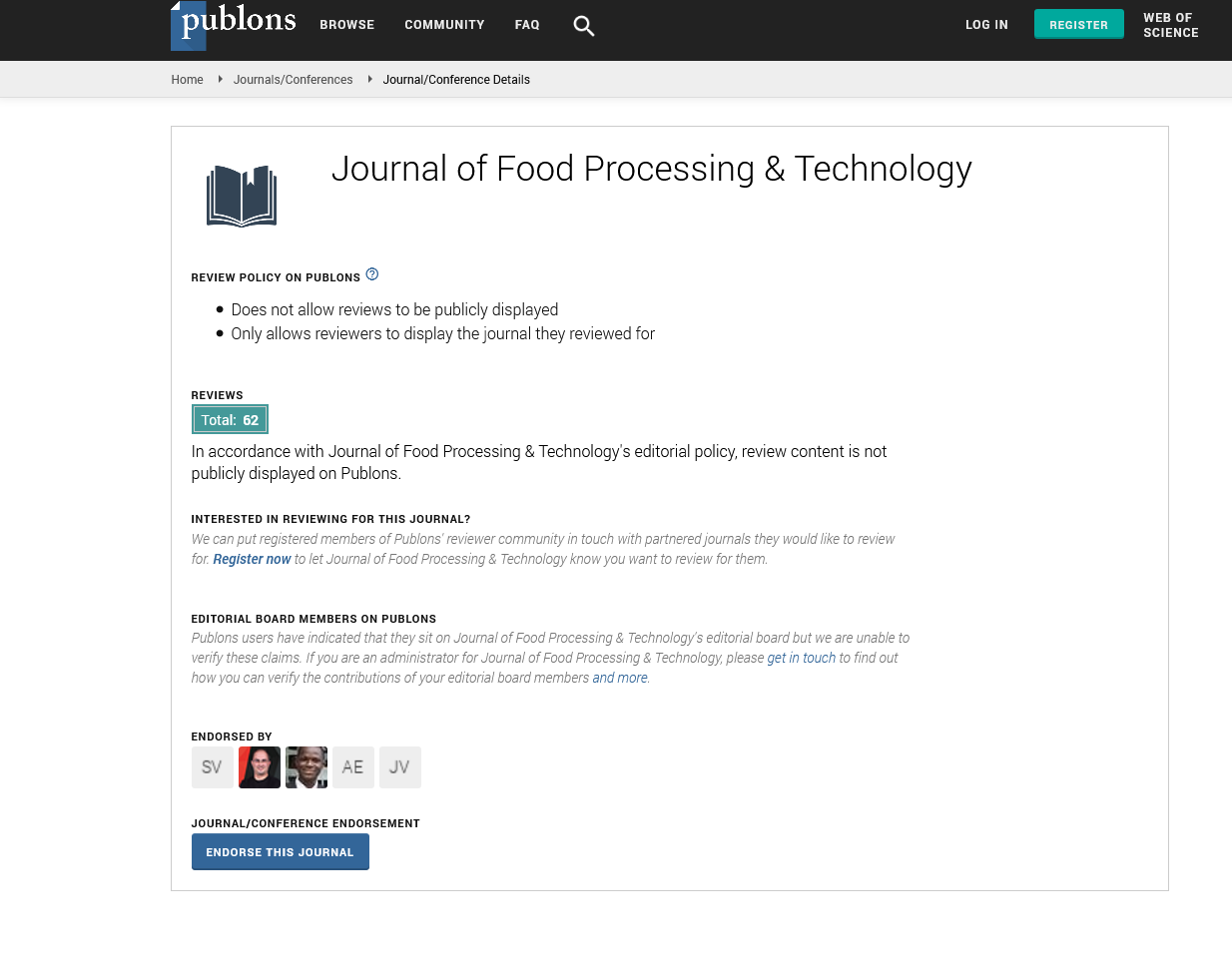Indexed In
- Genamics JournalSeek
- Academic Keys
- JournalTOCs
- China National Knowledge Infrastructure (CNKI)
- Access to Global Online Research in Agriculture (AGORA)
- Centre for Agriculture and Biosciences International (CABI)
- RefSeek
- Directory of Research Journal Indexing (DRJI)
- Hamdard University
- EBSCO A-Z
- OCLC- WorldCat
- Scholarsteer
- SWB online catalog
- Publons
- Euro Pub
- Google Scholar
Useful Links
Share This Page
Journal Flyer

Open Access Journals
- Agri and Aquaculture
- Biochemistry
- Bioinformatics & Systems Biology
- Business & Management
- Chemistry
- Clinical Sciences
- Engineering
- Food & Nutrition
- General Science
- Genetics & Molecular Biology
- Immunology & Microbiology
- Medical Sciences
- Neuroscience & Psychology
- Nursing & Health Care
- Pharmaceutical Sciences
Opinion Article - (2025) Volume 16, Issue 1
Role of Enzymes in Fruit Juice Clarification Processes
Laura Bennett*Received: 27-Jan-2025, Manuscript No. JFPT-25-29176; Editor assigned: 29-Jan-2025, Pre QC No. JFPT-25-29176; Reviewed: 12-Feb-2025, QC No. JFPT-25-29176; Revised: 18-Feb-2025, Manuscript No. JFPT-25-29176; Published: 26-Feb-2025, DOI: 10.35248/2157-7110.25.16.1144
Description
The clarification of fruit juices is a crucial step in juice processing that significantly influences the quality, stability and consumer acceptance of the final product. Among the various methods employed to achieve clarity, the use of enzymes has emerged as a highly effective, natural and industry-preferred technique. Enzymatic treatment plays a central role in breaking down complex polysaccharides, removing suspended particles and reducing turbidity, thereby producing clear, visually appealing fruit juices without compromising nutritional value.
As fruit juices naturally contain pectins, starches, hemicellulose, cellulose and various other colloidal substances that contribute to haze formation, enzymes serve as specific and efficient biocatalysts that degrade these macromolecules to facilitate clarification. Pectin, a structural polysaccharide present in the cell walls and middle lamella of plant tissues, is the primary cause of turbidity in fruit juices. Pectins form a colloidal suspension that traps other insoluble particles, making them difficult to remove by conventional filtration or sedimentation.
Pectinase, a group of enzymes that includes Pectin Methyl Esterase (PME), Polygalacturonase (PG) and Pectin Lyase (PL), is widely used in juice clarification to degrade the pectic substances. PME acts by demethylating pectin molecules, converting them into pectic acid. PG then hydrolyzes the α-1,4-glycosidic linkages in the polygalacturonic acid chain, reducing the molecular weight and breaking the gel structure. PL further cleaves pectin via a β-elimination mechanism, producing low-viscosity fragments. The synergistic action of these enzymes results in the effective solubilization of pectin, leading to a marked reduction in juice viscosity and improved filterability.
Apart from pectinases, other enzymes such as cellulases and hemicellulases are also used to break down the cellulose and hemicellulose present in fruit pulp. These components, especially in high fiber fruits like apples, guavas and berries, can form fibrous networks that retain suspended particles and hinder juice clarification. Cellulases hydrolyze the β-1,4-glycosidic bonds in cellulose to release glucose units, while hemicellulases act on complex heteropolysaccharides like xylans, mannans and glucans. Their combined activity loosens the cell wall matrix, aiding in the release of juice and facilitating the removal of haze-forming substances. This not only enhances clarity but also increases juice yield, making enzymatic treatment a cost-effective choice for commercial juice production.
Starch-degrading enzymes such as amylases are employed in juices derived from starch-rich fruits like bananas and mangoes. Starch, if not hydrolyzed, can gelatinize during heat processing and contribute to turbidity and sedimentation. Amylases catalyze the hydrolysis of starch into dextrins and sugars, thus preventing haze formation and improving the clarity and stability of the juice during storage. Moreover, the sugar produced can slightly enhance the sweetness of the juice, reducing the need for added sweeteners.
The effectiveness of enzymatic clarification depends on various factors, including enzyme concentration, temperature, pH, reaction time and the specific composition of the fruit juice. Most commercial enzymes function optimally at temperatures ranging from 40°C to 55°C and pH levels between 3.5 and 5.5, which coincide well with the natural properties of many fruit juices. However, the choice of enzyme must be tailored to the fruit type and its pectin structure, as different fruits possess varying degrees of methylation and branching in their pectic substances.
In industrial settings, enzymes are typically added after juice extraction, during the maceration or holding phase. The reaction is allowed to proceed under controlled conditions, after which the juice is subjected to clarification techniques such as centrifugation or filtration. Enzymatic pre-treatment enhances the efficiency of these downstream processes, reducing processing time, lowering energy costs and minimizing the need for chemical clarifying agents. This contributes to a more sustainable and environmentally friendly production process, which is increasingly valued by both manufacturers and consumers.
In addition to improving clarity, enzymes can influence other quality parameters of fruit juice. By degrading polysaccharides and releasing bound phenolic compounds, enzymatic treatment can enhance the antioxidant capacity and flavor profile of the juice. In some cases, enzymatic breakdown also facilitates the release of aroma compounds, thereby enriching the sensory characteristics of the final product. However, care must be taken to avoid over-hydrolysis, which can lead to undesirable changes in taste, mouthfeel, or nutritional value.
The role of enzymes in juice clarification has been widely researched and optimized over the years, leading to the development of tailored enzyme blends for specific fruit types and processing goals. Advances in biotechnology have enabled the production of genetically engineered enzymes with improved stability, activity and specificity. These developments have expanded the scope of enzymatic applications beyond traditional juices to include functional beverages, purees, smoothies and even fermented fruit drinks.
In conclusion, enzymes play a pivotal role in fruit juice clarification by efficiently breaking down haze-forming substances, reducing viscosity and enhancing filtration. Their ability to work under mild conditions while preserving the natural quality of the juice makes them an indispensable tool in modern food processing. As consumer demand for clean label, additive-free beverages continues to grow, enzymatic clarification stands out as a natural and sustainable approach that aligns with the principles of minimal processing and high product integrity. With ongoing research and technological innovations, the role of enzymes in juice processing is expected to expand further, offering more refined solutions for quality enhancement and process optimization in the fruit juice industry.
Citation: Bennett L (2025). Role of Enzymes in Fruit Juice Clarification Processes. J Food Process Technol.16: 1144.
Copyright: © 2025 Bennett L. This is an open access article distributed under the terms of the Creative Commons Attribution License, which permits unrestricted use, distribution and reproduction in any medium, provided the original author and source are credited.


